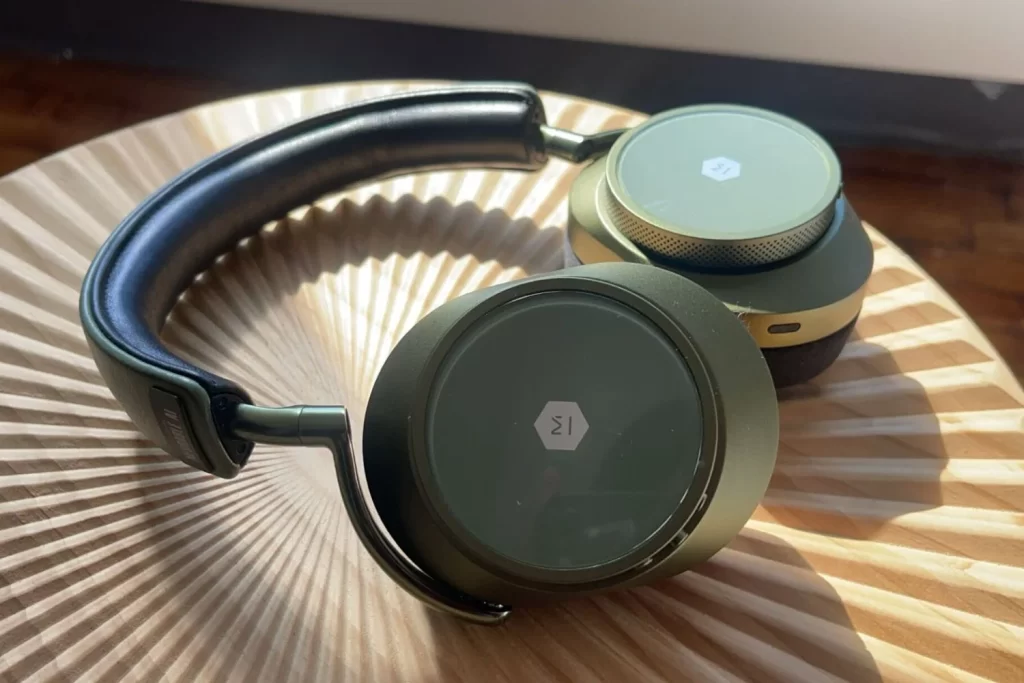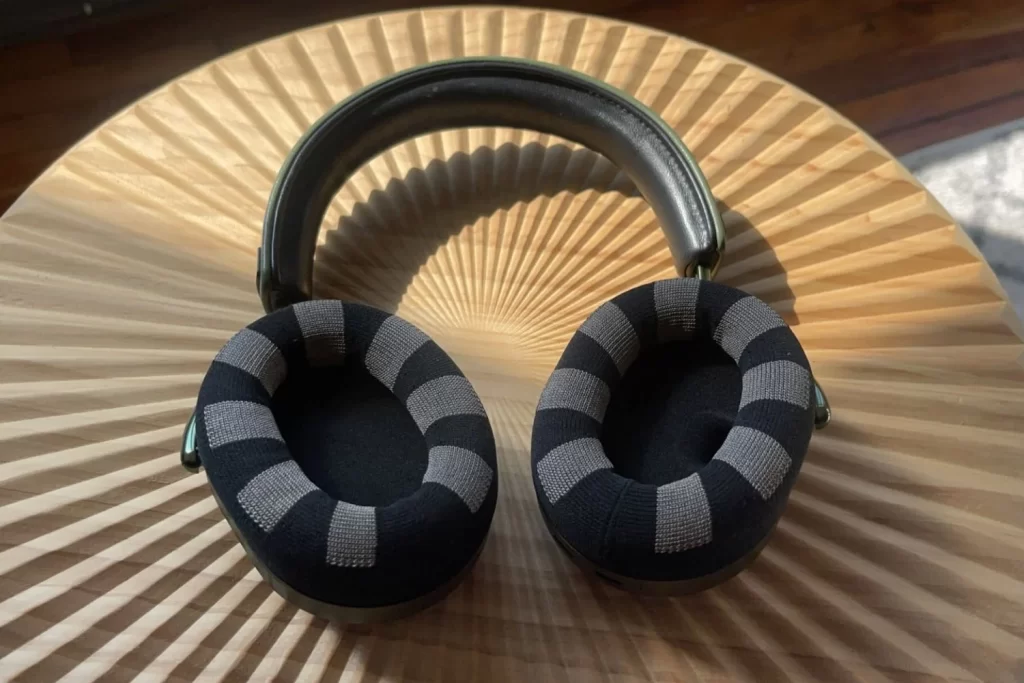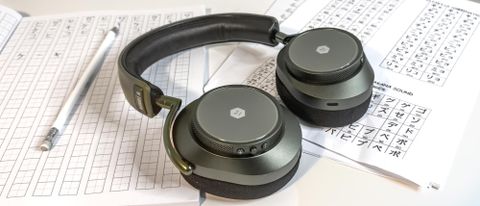Master & Dynamic, known for its luxury audio products, has launched the MW75 Neuro headphones, which integrate EEG (Electroencephalography) technology to monitor brain activity. Priced at $700, they promise a unique blend of high-quality sound and cognitive tracking. However, the question arises: do they offer enough value to justify the steep cost, limited functionality, and short battery life?
Overview of the MW75 Neuro

Master & Dynamic’s reputation is built on premium sound quality and stylish design. Their headphones often carry a hefty price tag, with the MW75 series previously priced at $600. The MW75 Neuro is a refreshed model that retains the aesthetic appeal of its predecessor but adds advanced EEG sensors for tracking focus. This technology allows users to monitor brain activity without the cumbersome setup of traditional EEG tests, which typically require a cap and wires connected to a computer.

At first glance, the MW75 Neuro looks similar to the original MW75, featuring the same sleek design that has garnered attention. The headphones are equipped with sensors that monitor your brain’s electrical signals, providing insights into focus levels and attention spans through a companion app called Neurable.
Features and Functionality
The MW75 Neuro is designed to help users enhance their concentration. The EEG sensors analyze brain activity and offer insights via the Neurable app. Users can track their focus throughout the day, receive notifications about when to take breaks, and accumulate points for maintaining attention. The app aims to gamify productivity, making it appealing to those looking to improve their focus habits.
The data collected includes metrics on optimal focus times and activity types (work, study, etc.), along with charts illustrating periods of high, medium, and low focus. These features are particularly beneficial for individuals with attention-related challenges. However, the current functionality raises questions about its overall value.
Limitations of the MW75 Neuro
While the MW75 Neuro’s concept is intriguing, its practical application feels limited. The primary functions revolve around tracking focus and providing feedback, but many users may find this data insufficient for the price. Feedback from potential users, including those with ADHD, suggests that the insights provided may not be groundbreaking. One user expressed skepticism about the need for such a product, stating that they already understood their focus patterns without needing a dedicated device.
Another significant concern is the headphones’ weight. At 378 grams, they can become uncomfortable during extended use. This weight is comparable to other premium headphones, like Apple’s AirPods Max (385g) and Sony’s WH-1000XM5 (250g), but the MW75 Neuro feels particularly cumbersome due to its additional sensors. Users must ensure a snug fit for the EEG sensors to work effectively, leading to potential discomfort if adjustments are needed for hair, glasses, or accessories.
Battery Life: A Major Drawback
One of the most pressing issues with the MW75 Neuro is its short battery life, lasting only eight to nine hours when both ANC (Active Noise Cancellation) and EEG features are enabled. In a world where consumers expect their headphones to last throughout the day, this limitation is a significant drawback. Frequent recharging becomes necessary, and for users who might forget to charge daily, this could render the headphones unreliable.
The MW75 Neuro is marketed as a device that can help users understand how different activities—like drinking coffee or practicing yoga—affect their focus. However, the short battery life limits the ability to observe these effects over time. To effectively track patterns, users would need to wear the headphones for extended periods, which isn’t feasible given the current battery performance.
Connection Issues with the Neurable App
Adding to the frustration, the Neurable app has been reported to have connection issues. Users have experienced difficulties with the app failing to recognize the headphones, even when they are connected via Bluetooth. This inconsistency can disrupt the user experience and lead to missed opportunities for tracking focus.
For example, during testing, some users found that the app frequently required them to toggle Bluetooth settings or restart the app to establish a connection. This can be particularly aggravating for users who want to quickly initiate a focus session without dealing with technical hiccups.
Positive Aspects of the MW75 Neuro
Despite the concerns, there are positive elements worth highlighting. The MW75 Neuro accurately tracks focus metrics and presents data in a visually appealing way, helping users see their progress over time. This can serve as a motivational tool, encouraging individuals to concentrate better and be mindful of their productivity.
Furthermore, the design and sound quality of the MW75 Neuro remain impressive. Master & Dynamic has maintained its reputation for excellent audio performance, featuring rich sound and effective noise cancellation. The physical buttons on the headphones enhance usability, making it easy to navigate settings without relying solely on the app.
The Role of Accountability in Focus
Interestingly, the act of tracking focus with the MW75 Neuro may have a psychological impact. Knowing that brain activity is being monitored can motivate users to maintain better concentration. Many found that they were more mindful of their work habits, striving to achieve a “perfect” focus chart with minimal distractions.
However, while the point system encourages users to concentrate, it may not provide enough incentive for sustained engagement. Users can quickly reach the daily goal of 100 points, leading to diminished motivation to continue tracking their focus.
Future Prospects and Updates
Master & Dynamic has indicated plans to enhance the MW75 Neuro with new features, including integration with ChatGPT for hands-free messaging and Spotify to help identify music that aids concentration. The company also aims to expand the range of brain conditions the headphones can address, promising an evolving product.
While these potential updates are exciting, it’s crucial to evaluate the MW75 Neuro based on its current capabilities. The trend of marketing gadgets based on future promises—without delivering substantial value today—raises concerns. Recent products, such as Humane’s AI Pin and the iPhone 16, have faced scrutiny for similar reasons. It’s essential to consider the MW75 Neuro as it stands now rather than relying on features that may or may not materialize.
Conclusion
In summary, the MW75 Neuro presents a fascinating concept that combines audio technology with cognitive tracking. However, its current limitations in functionality, battery life, and user experience make it hard to justify the steep price tag. While the design and sound quality are commendable, many potential buyers might find it challenging to embrace a product that requires daily recharging and offers limited insights.
For those interested in tracking their focus, it may be worth waiting to see how Master & Dynamic addresses these issues and enhances the product over time. Until then, the MW75 Neuro remains an intriguing idea with significant room for improvement, appealing mainly to tech enthusiasts eager to explore the intersection of audio and brain activity.

